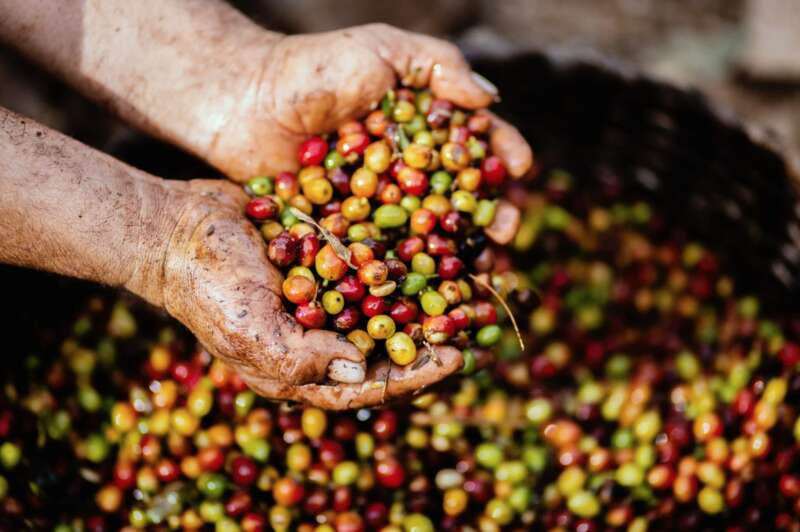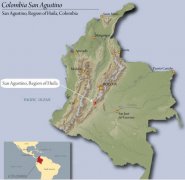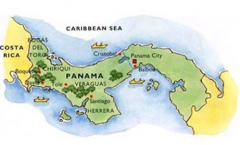Characteristics of coffee bean flavor and bean honey treatment in Tarazhu, Costa Rica

Flavor characteristics of Tara beads in Costa Rica
Costa Rican coffee has a history of more than 200 years. It is not only an important basis for the country's economy and people's livelihood, but also an indispensable role in the global coffee history. In the past decade, it has become popular all over the world as a micro-processing farm. In this small Central American country, because of its special geographical environment, it has created a wide variety of boutique coffee with different flavors. The farmers living here not only have perfect working environment and production conditions, democratic and peaceful national conditions, strict labor laws, appropriate medical and health care system, but also can imagine why this is the first country with no military in Central America, and it is also the seat of the United Nations University for Peace.
Tarazu, located in the Talamanca Mountains of Costa Rica, was founded in 1970 and has long been one of the representative producing areas of Costa Rican coffee. The area has beautiful scenery, good coffee quality and a rich history. Every year, the Tarazhu Cooperative employs about 10000 people to directly engage in coffee production and support work. The coffee plantations that join farmers are mainly on the volcanic hillside with an average elevation of about 1500 meters behind the treatment plant, with an annual rainfall of 3200 mm. The varieties are Caturra and Catuai. Volcanic soil, the careful care of farmers, high-mature berries, clean water, a century-old washing process that boasts, and the final European treatment process to completely remove defective beans by hand, ensure that the flavor of each cup of coffee will reveal its introverted demeanor in its unexpected purity.
Tarazhu is a world-famous producing area, the main feature is that the high seafood area creates an unparalleled perfect taste, tastes quite mild and supple, sour, sweet and chocolate bitter, inclusive and extremely balanced, is the classic flavor of gourmet coffee.
Costa Rican honey treatment
"Honey treatment" originates from Costa Rica and is regarded as an original treatment method in Costa Rica. In the past, Costa Rica was often washed with water, and the processed coffee beans had bright acidity and dry flavor, but they consumed a lot of water resources, which not only had a high cost, but also had a great impact on the environment. The honey treatment is a processing method that gives priority to the environment in Costa Rica. The editor thinks that apart from being unique in coffee treatment, this method is also worth learning from other big coffee countries.
Honey treatment means that the pectin layer of coffee beans is directly retained and exposed after screening, but before exposure, the pectin layer of coffee beans is very sticky and feels as sticky as honey; when the coffee pulp is separated from coffee beans, the outer coated pectin layer is exposed to the sun and absorbs moisture in the air to make the pectin layer more sticky.
Honey treatment is fastidious and laborious.
The first step is to select high-quality fruit, and then peel off the pulp to leave the endocarp, where the endocarp is the core of honey treatment. Endocarp is rich in sugar and sour taste, in the process of drying, sweet and sour taste will slowly seep into the coffee beans, so it is more obvious in the sweet taste, also known as "sweet as honey" treatment.
The second step of drying is also the most important condition for the production of high-quality coffee beans. If the drying time is short, the sweet taste is not good; over time, the coffee will be moldy. Therefore, the risk of honey treatment is very high, mainly because the weather in Costa Rica is humid, but it is easy to mildew and rot when it is exposed to the sun for a long time, but it also reflects the high standard of coffee in Costa Rica.
Finally, when the coffee is exposed, it is almost as dry and roasted as any other treatment.

100% Kaddura single variety of the southern manor of Ponte microprocessing plant, Costa Rica
Costa Rica Tarrazu Puente El Sur Farm Caturra, White Honey
■ country Costa Rica (Costa Rica)
■ producing area Tarazhu (Tarrazu)
■ Manor South Manor (El Sur Farm)
■ producer Ponte Microprocessor Plant (Puente Micro Mill)
■ treatment method White honey treatment (White Honey)
■ variety 100% Kaddura (Caturra)
■ 1600 meters above sea level
■ flavor: exquisite lemon, citrus fruit acidity, covered with almond aroma, complex flavor of roasted hazelnut, very charming orange blossom water flavor when sipping, the overall level is changeable, it is also the best Ponte micro batch ever drunk.
Important Notice :
前街咖啡 FrontStreet Coffee has moved to new addredd:
FrontStreet Coffee Address: 315,Donghua East Road,GuangZhou
Tel:020 38364473
- Prev

Colombian Coffee Flavor Coffee beans characteristics of Coffee beans in St. Augustine producing area
The geographical features and flavor of Colombia are South American countries, with the Caribbean Sea to the north, Brazil to the southeast, Panama and the Pacific to the west, and Peru to the south, with Spanish as the official language. Colombia's rich landform, low latitude, high altitude and excellent natural environment are excellent conditions for the growth of boutique coffee. Located between 3-8 degrees north latitude, belonging to low latitude
- Next

Barnabas Coffee Bean Flavor description of Diamond Mountain Coffee beans in Jade Manor
Panama Coffee Geography and Flavor Panama is the southernmost country in Central America and an important isthmus connecting North and South America. Because the Panama Canal runs through Central America and connects the Pacific Ocean, the Caribbean Sea and the Atlantic Ocean, it not only facilitates transportation and trade, but also brings a great deal of agricultural technology and knowledge from the United States and Europe. Boutique coffee is grown in the north of the country, near Costa Rica,
Related
- Beginners will see the "Coffee pull flower" guide!
- What is the difference between ice blog purified milk and ordinary milk coffee?
- Why is the Philippines the largest producer of crops in Liberia?
- For coffee extraction, should the fine powder be retained?
- How does extracted espresso fill pressed powder? How much strength does it take to press the powder?
- How to make jasmine cold extract coffee? Is the jasmine + latte good?
- Will this little toy really make the coffee taste better? How does Lily Drip affect coffee extraction?
- Will the action of slapping the filter cup also affect coffee extraction?
- What's the difference between powder-to-water ratio and powder-to-liquid ratio?
- What is the Ethiopian local species? What does it have to do with Heirloom native species?

